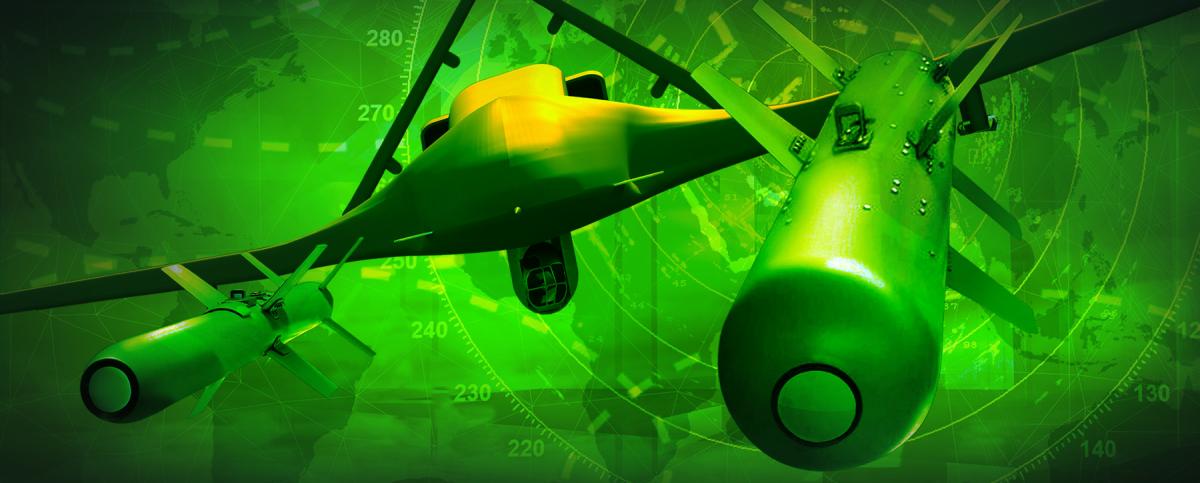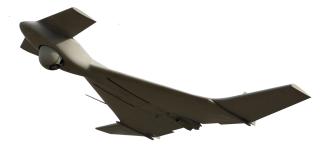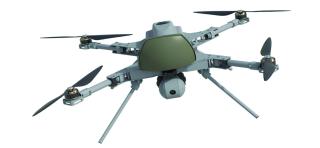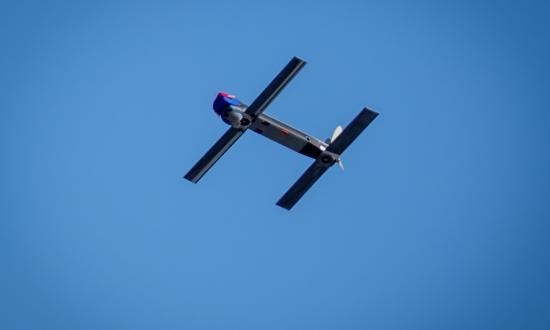The 2020 war between Armenia and Azerbaijan over Nagorno-Karabakh (also known as Artsakh) in the South Caucasus demonstrated how belligerents are using inexpensive, commercially available unmanned combat aerial vehicles (UCAVs), or combat drones, with lethal effect. Although poorly understood and mostly ignored by a general population focused on COVID-19, that conflict changed the nature of warfare and could be a precursor to how future wars are fought on a larger scale.1
Neither Armenia nor Azerbaijan has a significant air force, so both militaries acquired drones as a cheap alternative. Cost-effective and increasingly available in the military market, drones were ideal for operating within Nagorno-Karabakh’s remote mountains, forests, and valleys. Indeed, by their nature, combat drones can stealthily overfly enemy forces, avoid detection and antiaircraft defenses, and seek out and destroy targets once accessible only to high-tech military forces. In addition to striking directly from the air, combat drones can scout for infantry, armor, and artillery units hidden by heavy forests, and then spot for indirect artillery or missile fire. The United States and its allies should prepare for this affordable and adaptable threat.
Drone Warfare in Nagorno-Karabakh
Backed by Turkey, Azerbaijan invested heavily in combat drones over the past decade, most notably the Turkish-built Bayraktar TB2. Further, the Azerbaijanis began building, under license, the Israeli-designed Harop “suicide” drone. While the Bayraktar TB2 functions much like the U.S. Predator/Reaper, capable of launching missiles at targets, the Harop is a loitering munition—a cross between an unmanned aerial vehicle (UAV) and a missile that can strike kamikaze-style, following target identification and release.2
When serious fighting broke out in September 2020, instead of having to launch ground attacks against prepared defenses as in previous conflicts, the Azerbaijanis found their drones allowed them to conduct precision strikes—saving their ground-force strength while inflicting serious damage and casualties against the Armenian-backed forces. Hundreds of targets, including antiaircraft batteries, headquarters, armor columns, artillery batteries, and supply convoy vehicles, were destroyed.3
Armenia had a smaller drone force, designed mostly for reconnaissance and surveillance, but it insisted it matched Azerbaijan in numbers of combat drones. Both sides claimed to have inflicted heavy casualties against the other with their drones, but the truth is unclear because of a lack of objective international observers and reporters on the ground.4 Most reporting, however, agrees that the Azerbaijanis gained the upper hand over the Armenians during the war, particularly with the October 2020 attack against Artsakh’s Defense Minister and Commander of the Defense Army, Lieutenant-General Jalal Harutyunyan, who was wounded when his vehicle was struck and destroyed by a drone.5
While determining the exact number of casualties and the level of destruction is difficult, drones proved to be a valuable propaganda weapon as well. The Azerbaijani military released videos, often professionally produced, that showed Armenian tanks and other armored vehicles being struck and destroyed or damaged, giving the impression of an overwhelming aerial assault. The COVID-19 pandemic and the relative isolation of Nagorno-Karabakh made it difficult to confirm the accuracy of those videos or get an objective view of the war. Competing Armenian and Azerbaijani narratives eventually emerged on social media and the “blogosphere” that were propagated through Twitter, Facebook, Instagram, YouTube, and Reddit. By the sheer number of postings, the Azerbaijanis gained the advantage in the public relations war.
On the defensive side of the fight, Artsakh antiaircraft units had some success against drones, but Russian-made antiaircraft systems—including the 9K33 Osa (SA-8) and 9K35 Strela-10 (SA-13) mobile short-range air-defense systems and the S-300PS (SA-10) and 2K12 (SA-6) medium-/long-range surface-to-air missile systems—were not designed to mitigate the threat. Even if a drone was shot down, the loss was minimal in terms of material and expense, and a drone was easier to replace than a warplane and its crew. Therefore, using several drones to take out a protected target proved to be safer, more efficient, and more effective than sending in a flight of human-piloted fighter-bombers or attack helicopters.6
Turkish Drones in Regional Conflicts
The war in the Nagorno-Karabakh region was not the only conflict in which drones challenged current military thinking. As a leader in developing and exporting drone technology, Turkey also previously exported or used them in Syria and Libya. For example, in February 2020, Turkish drone-launched missiles and drone-directed artillery fire destroyed more than one hundred armored vehicles from Bashar al-Assad’s army in Syria’s Idlib province. This was in retaliation for a Syrian airstrike that killed 33 Turkish soldiers, which was the third such attack on Turkish forces in the previous two months. The retaliatory attack crippled the Syrian offensive against the rebels controlling Idlib province, and Syrian attacks against Turkish forces decreased.7
In Libya, neither the rebel Libyan National Army (LNA) nor the U.N.-recognized Government of National Accord (GNA), the two major combatants during the second civil war there from 2014 to 2020, had significant air forces, and the aircraft they did have were antiquated and poorly maintained. Instead, both sides used UAVs as their primary air forces. In April 2019, the LNA used Chinese-made Wing Loong drones, piloted by United Arab Emirates (UAE) pilots from the Al Khadim airbase, to support an advance into Tripoli and push GNA forces into a pocket. In December 2019, Turkish President Recep Tayyip Erdogan sent Turkish UAVs, including Bayraktar TB2s, to support the GNA. The Turkish drones reversed the GNA’s fortune by attacking LNA targets and forcing a retreat.8
Because of these successes, Turkey is improving its UAV design and manufacturing capabilities. Its new Aksungur turboprop UCAV completed a 28-hour test flight with a full load of 12 MAM-L guided missiles (smart micro munitions), demonstrating a much larger payload than those carried by older drone systems. Additional tests involved the Aksungur carrying a 551-pound MK-82 bomb with a Teber guidance kit. A UCAV with the ability to linger over an area for 24 hours, or fly thousands of miles to strike a target otherwise out of range, should not be taken lightly.9
A more serious concern for defense analysts and intelligence officers, however, is Turkey’s Kargu-2 loitering munition. These drones weigh only 15 pounds and are designed to operate in swarms of 20 units. Each can be equipped with one of three warheads—a basic high-explosive fragmentation warhead, a shape-charge warhead, or a thermometric warhead for attacks against enemy targets in enclosed spaces. The Kargu-2 can stay airborne for 30 minutes, reach speeds of 90 mph, and be equipped with facial-recognition technology to find and eliminate specific people. Some 500 have already been built for the Turkish military.
In addition to Turkey, other nations also are investing in drone swarm technology. Over the past several years, China has test-launched between 120 and 200 drones similar in size and function to the more recent models of China Poly Defense’s CH-901 loitering munition. The American Coyote drone is part of the Navy’s Office of Naval Research Low-Cost UAV Swarming Technology (LOCUST) effort and is being developed as an intelligence-gathering device. It is currently used with National Oceanic and Atmospheric Administration hurricane hunters to examine areas of a hurricane a plane cannot safely reach.10
Implications of Drone Warfare
As a sign that the U.S. Navy and Marine Corps are taking the drone threat seriously in the Middle East, the services deployed and used a Light Marine Air Defense Integrated System (MRZR LMADIS) on board the USS Boxer (LHD-4) against an Iranian drone that threatened the ship in the Strait of Hormuz in July 2019. This was the first known kill of a drone by an electronic-warfare, directed-energy weapon. In May 2020, the Navy shot down a target drone using a prototype laser installed on board the amphibious transport dock USS Portland (LPD-27), further demonstrating a commitment to defending ships and personnel from the increasing drone threat.11
While Turkey has had success with UCAVs, none of the three regions in which they have been deployed—Nagorno-Karabakh, Syria, and Libya—have significant electronic countermeasure (ECM) or laser defensive capabilities. It would be difficult to extrapolate the results from those three cases to the more advanced systems the United States, Russia, and China are developing. But suicide drones would be most susceptible to jamming, as they need to acquire and strike targets directly. UCAVs such as the Bayraktar and the Aksungur can avoid jamming by standing off and directing artillery strikes from afar in the air.
However, a more worrisome trend is the use of drones and drone swarms by terrorists or other nonstate actors. Among the drone applications terrorists could conceivably employ are:
• Striking military targets hundreds of miles away
• Assaulting a VIP convoy
• Diverting or distracting police/security forces while terrorists strike elsewhere
• Controlling a choke point, such as a bridge or a mountain pass
• Blackmailing governments or organizations (i.e., using the drone as a threat to enforce demands)
• Breeching a secure location, such as a bank or a prison12
Drones are a prime choice for these types of operations, as their employment limits exposure for terrorists, who could be hundreds of miles from the scene of the attack and long gone before law enforcement can react. A small team with enough skill, knowledge, and backing could create havoc far beyond their numbers, and do it from a distance. That would make tracking and apprehending or eliminating them much more difficult.
UCAV weapon technology is maturing and spreading quickly as it becomes cheaper and easier for civilians to acquire and/or build armed drones, and it is not unthinkable that they may be used in a terror attack. This scenario has already been envisioned in a short video called Slaughterbots produced in 2017 by University of California-Berkeley professor Stuart Russell and the Future of Life Institute. The video depicts small drones using facial-recognition technology and on-board explosives to attack universities and Congress, resulting in thousands of casualties and a paralyzed U.S. government.
Drones are maneuverable, affordable, expendable, and easily obtained, with ever-expanding capabilities. The United States and its allies should be preparing for the frightening implications of mass drone warfare, both in and outside battlespaces.13
1. Ridvan Bari Urcosta, “Drones in the Nagorno-Karabakh,” Small Wars Journal, 23 October 2020; “Armenia and Azerbaijan: The Conflict Explained,” The New York Times, 22 October 2020.
2. Paul Iddon, “Azerbaijan’s Growing Drone Arsenal May Have Led It to Believe It Has Edge Over Armenia,” Forbes, 7 October 2020; Barak Ravid, “Azerbaijan Using Israeli ‘Kamikaze Drones’ in Nagorno-Karabakh Clashes,” Axios, 30 September 2020.
3. Dorian Jones, “Turkish Drone Power Displayed in Nagorno-Karabakh Conflict,” VOA, 13 October 2020; “Eurasian Region Clash of Drones: How Israeli & Turkish Drones Have Created Havoc In Azerbaijan-Armenia War?” Eurasian Times, 10 October 2020.
4. Mike Eckel, “Drone Wars: In Nagorno-Karabakh: The Future of Warfare Is Now,” Radio Free Europe Radio Liberty, 8 October 2020.
5. Sebastien Roblin, “What Open Source Evidence Tells Us about the Nagorno-Karabakh War,” Forbes, 23 October 2020; “President Ilham Aliyev on the Destroyed and Taken as Military Trophies Equipment of the Armenian Armed Forces,” Trend News Agency, 20 October 2020; Henry Foy, “Drones and Missiles Tilt War with Armenia in Azerbaijan’s Favour,” Financial Times, 28 October 2020; Siranush Ghazanchyan, “Jalal Harutyunyan Wounded, Mikael Arzumanyan Appointed Artsakh Defense Minister,” Public Radio of Armenia, 27 October 2020.
6. Roblin, “What Open Source Evidence Tells Us about the Nagorno-Karabakh War.”
7. Sebastien Roblin, “Turkish Drones and Artillery Are Devastating Assad’s Forces in Idlib Province: Here’s Why,” Forbes, 2 March 2020.
8. Alex Gatopoulos,“‘Largest Drone War in the World’: How Airpower Saved Tripoli,” Al Jazeera, 28 May 2020.
9. Paul Iddon, “Turkey’s Drones Are Coming in All Sizes These Days,” Forbes, 4 October 2020.
10. Joseph Trevithick, “China Conducts Test of Massive Suicide Drone Swarm Launched from a Box on a Truck,” The War Zone, 14 October 2020.
11. Sam LaGrone, “Marines Took Out Iranian Drone for the Cost of a Tank of Gas,” USNI News, 19 July 2019; Geoff Ziezulewicz, “Watch This Ship-mounted Navy Laser Shoot Down a Drone,” Navy Times, 26 May 2020.
12. Jacob Ware, “Terrorist Groups, Artificial Intelligence, and Killer Drones,” War on the Rocks, 24 September 2019.
13. Matt McFarland, “‘Slaughterbots’ Film Shows Potential Horrors of Killer Drones,” CNN Money, 14 November 2017.









